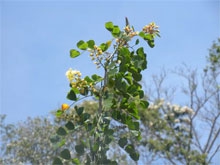This report presents examples of applications of bio-based products suitable for the plastic industry.
To access supplier's details and product’s documents (commercial document, technical data sheet), thank you to fill out some information about yourself.
The information collected will allow the supplier to contact you.
This information is collected by the cluster Industries & Agro-Resources (IAR).
Your information is sent to the company concerned. The supplier is likely to be outside of the European Union.
IAR and the supplier commit to a strictly internal use. This information will not be passed to third parties.
In accordance with Articles 39 and following of the French law n ° 78-17 of 6 January 1978 amended in 2004 relating to computing, files and liberties, you have the right to access, rectify and delete information about you, by contacting the cluster IAR (Jean BAUSSET, +33 3.23.24.92.03, contact@agrobiobase.com).
* Mandatory field

















